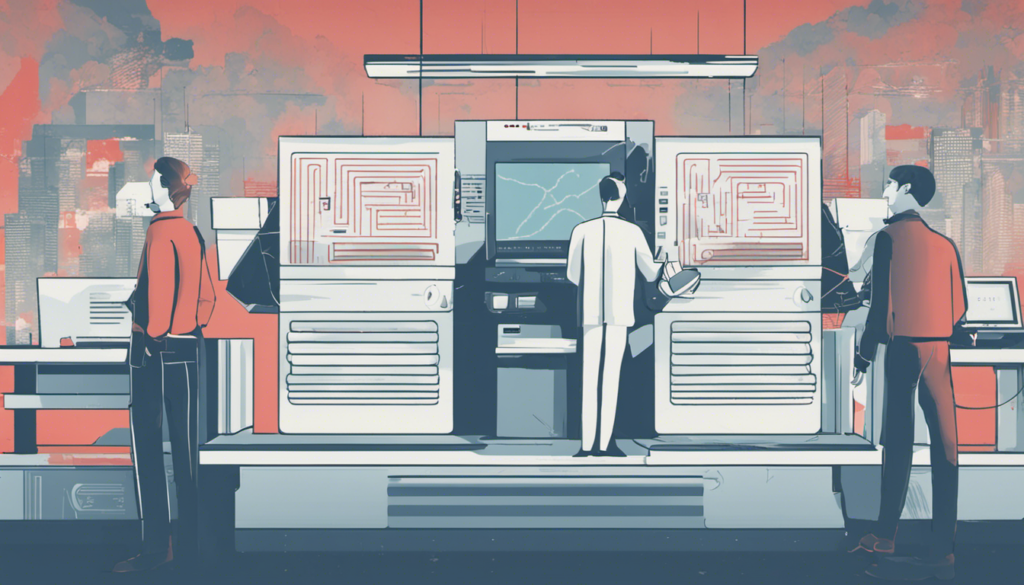Examining the Integration of Bionic Devices for Identity Verification and Transaction Authentication in Financial Services
Heading 1: Introduction to Bionic Devices in Financial Services
Bionic devices, once a concept confined to science fiction, are now becoming a reality in the financial services industry. These advanced technological marvels, which seamlessly combine human capabilities with machine intelligence, offer new and innovative solutions for identity verification and transaction authentication. With the increasing threat of cybercrime and the need for stronger security measures, the integration of bionic devices presents a promising opportunity for enhancing financial services and safeguarding sensitive information.
List 1: Benefits of Bionic Devices in Financial Services
– Enhanced Security: Bionic devices, such as fingerprint scanners and retina scanners, provide more reliable and secure methods of identity verification and authentication compared to traditional methods like passwords or PINs. These devices capture unique biological markers that are difficult to forge or replicate, ensuring that only authorized individuals have access to financial transactions and sensitive data.
– Convenience and Efficiency: Bionic devices offer a more convenient and efficient way to authenticate transactions. With the use of biometric data, users can quickly and easily prove their identity without the need for cumbersome authentication processes. This streamlines the user experience and reduces the risk of human error or fraudulent activity.
– Fraud Prevention: The integration of bionic devices in financial services significantly reduces the risk of fraud. By utilizing biometric data, institutions can verify the authenticity of individuals conducting transactions, making it extremely difficult for identity thieves or hackers to gain unauthorized access to accounts or perform fraudulent activities.
Table 1: Comparison of Traditional Authentication Methods and Bionic Devices
| Authentication Method | Traditional Methods | Bionic Devices |
|————————-|——————–|———————–|
| Passwords/PINs | Prone to theft | Highly secure |
| Two-Factor Verification | Time-consuming | Efficient and fast |
| Card-based Systems | Vulnerable to loss | Biometric verification|
Heading 2: Challenges and Considerations in Implementing Bionic Devices
While the integration of bionic devices in financial services holds immense potential, there are several challenges and considerations that institutions need to address before widespread adoption. These include:
List 2: Challenges and Considerations
– Cost and Infrastructure: Implementing bionic devices requires significant investment in hardware, software, and infrastructure. Financial institutions must evaluate the cost-benefit analysis and ensure that the necessary resources are available to support the integration of these technologies effectively.
– Data Security and Privacy: Collecting and storing biometric data raise concerns about privacy and data security. Institutions must establish robust measures to protect user information and comply with relevant data protection regulations. Transparent communication with customers about data usage is crucial to building trust in the system.
– User Acceptance and Education: Introducing bionic devices may face resistance from users who are unfamiliar with or skeptical of the technology. Financial institutions must invest in user education programs to familiarize customers with the benefits and usage of these devices.
Table 2: Comparison of Challenges and Considerations in Implementing Bionic Devices
| Challenge | Traditional Methods | Bionic Devices |
|——————-|—————————|————————|
| Cost and | Cost-effective | Requires investment |
| Infrastructure | implementation | in hardware and |
| | | infrastructure |
| Data Security and | Relatively secure | Privacy and security |
| Privacy | concerns | considerations |
| User Acceptance | Familiar and widely used | Requires user education|
| and Education | | and acceptance |
Heading 3: Future Implications and Conclusion
The integration of bionic devices for identity verification and transaction authentication in financial services is a compelling advancement that offers enhanced security, convenience, and fraud prevention. While there are challenges to overcome, the benefits outweigh the obstacles, making bionic devices a promising solution for the future of financial services. With ongoing advancements in technology and increasing consumer acceptance, it is only a matter of time before bionic devices become a mainstream method for securing financial transactions and protecting sensitive information.
List 3: Future Implications
– Biometric ATMs: Bionic devices can revolutionize the banking experience by allowing customers to access their accounts and perform transactions securely using biometric data.
– Wearable Authentication: The integration of bionic devices into wearable technology, such as smartwatches or fitness bands, can provide a seamless and convenient method of authentication on the go.
– Industry Collaboration: Financial institutions, technology companies, and regulatory bodies must collaborate to establish standard protocols and ensure interoperability between different bionic devices and systems.
In conclusion, the integration of bionic devices presents an exciting opportunity for the financial services industry to enhance security and authentication processes. By leveraging biometric data, institutions can provide a more secure and convenient banking experience for their customers. While challenges exist, such as cost and data security, addressing these considerations can pave the way for a future where bionic devices become an integral part of financial services.
References:
1. Global Economics: The End – /finance/global-economics-the-end/
2. Successful Budgeting Strategies – /finance/successful-budgeting-strategies-2/
3. Cryptocurrency Explained – /finance/cryptocurrency-explained-2/
4. Understanding Different Types of Loans – /finance/understanding-different-types-of-loans/
5. Insurance: Protecting Your Financial Future – /finance/insurance-protecting-your-financial-future/




